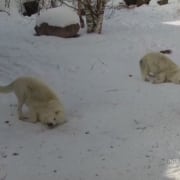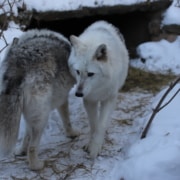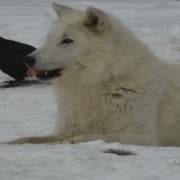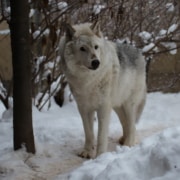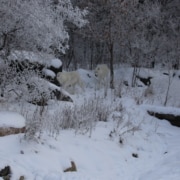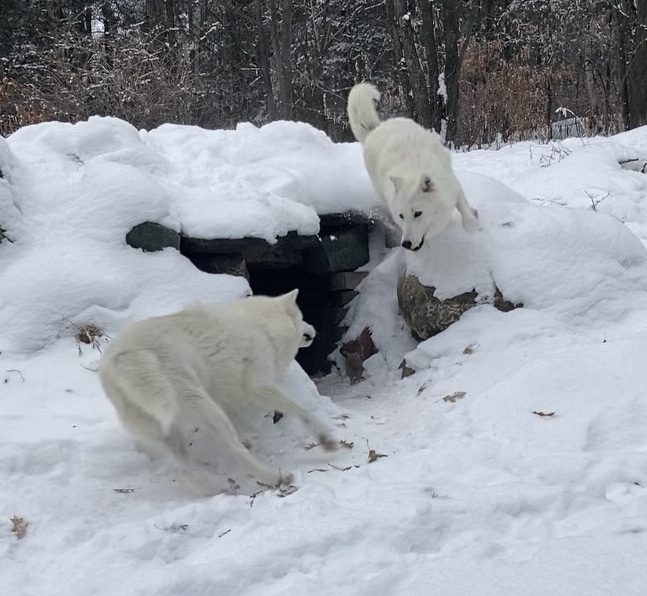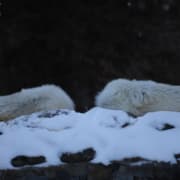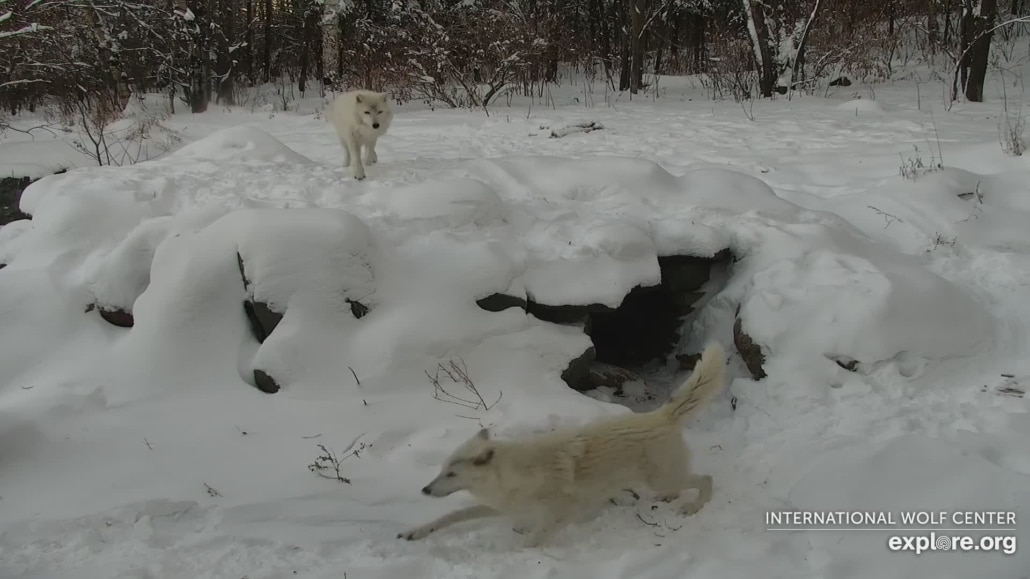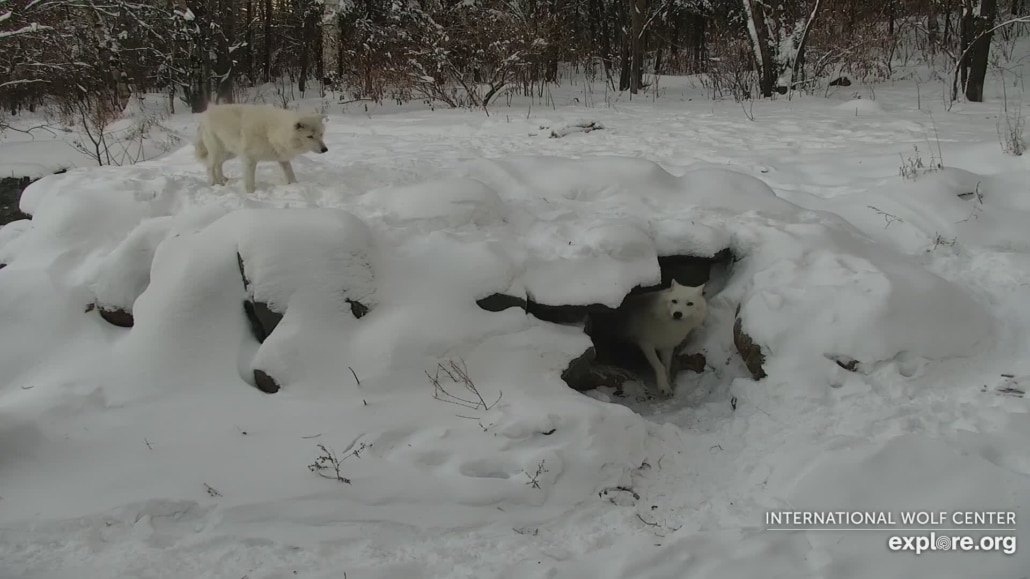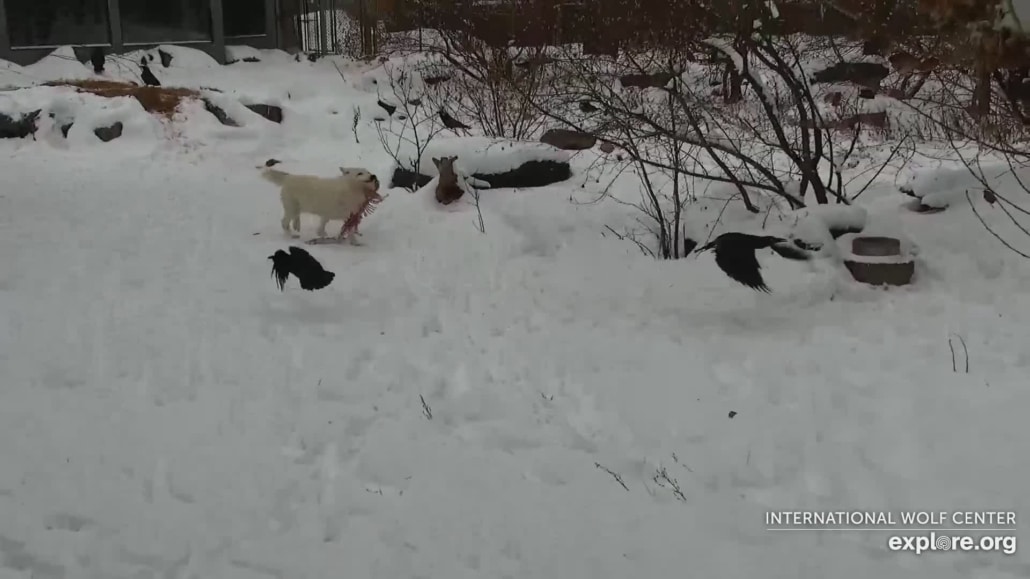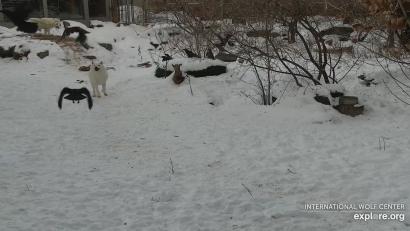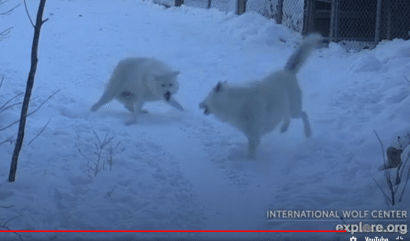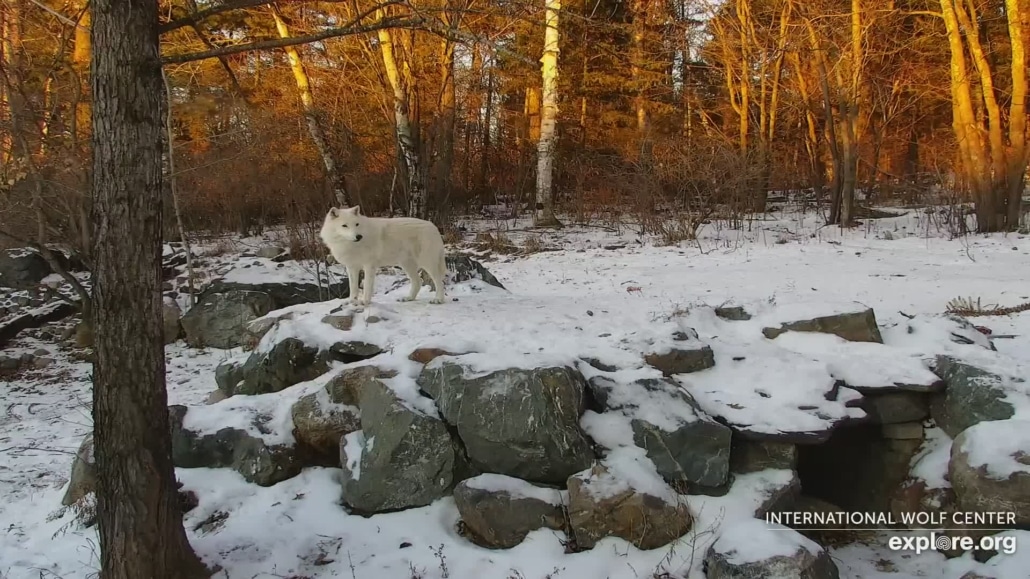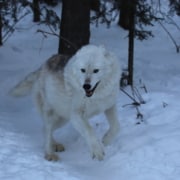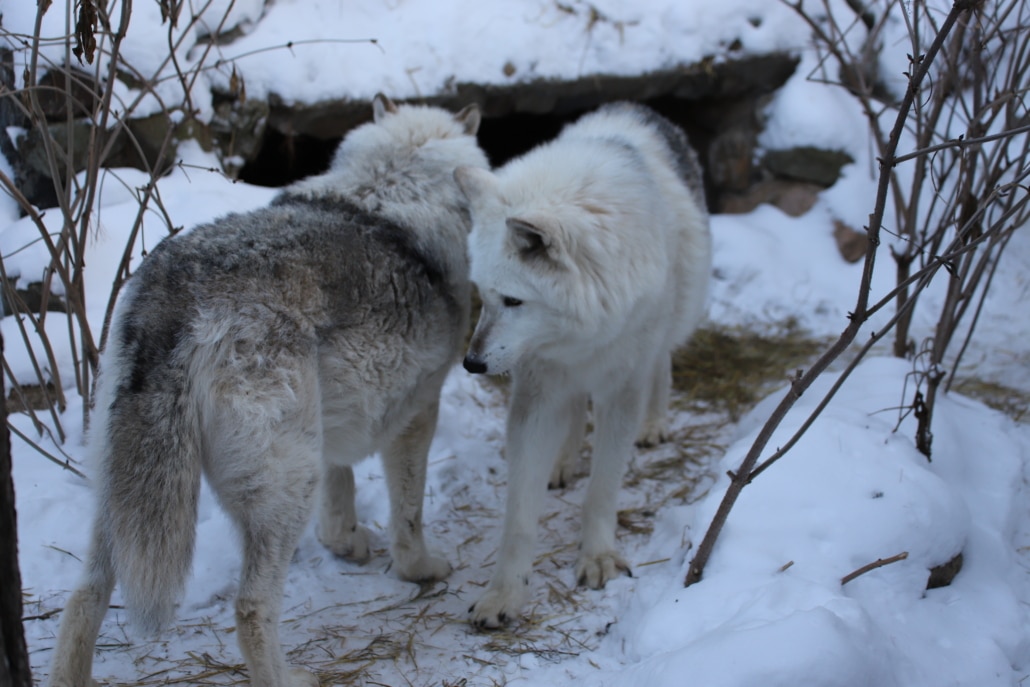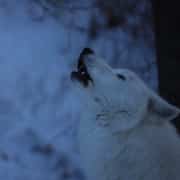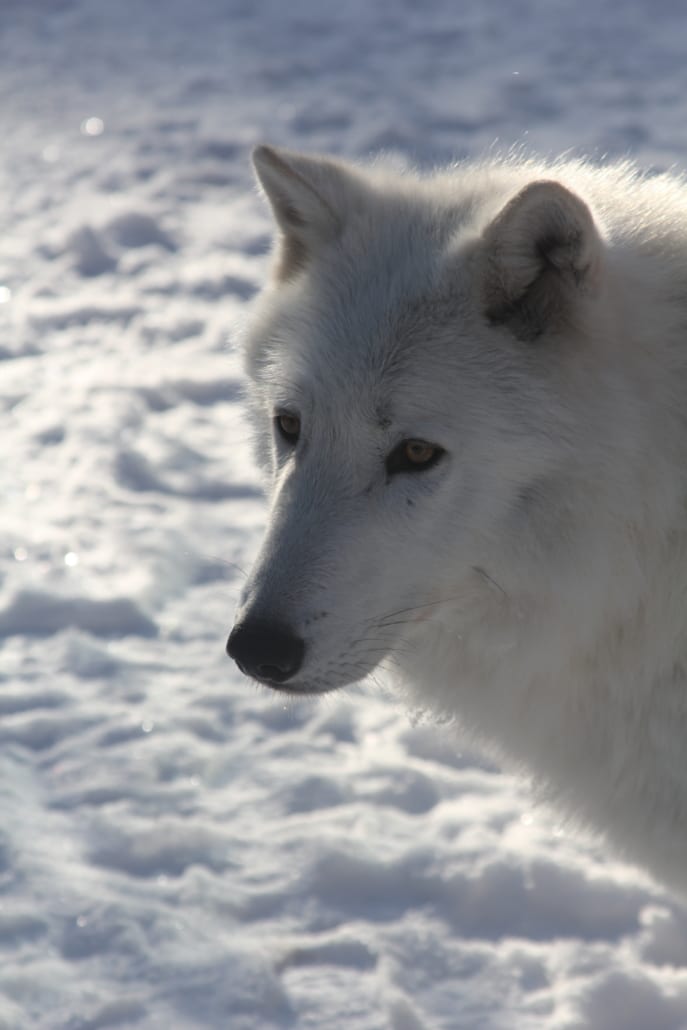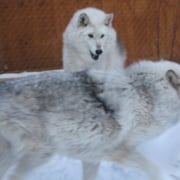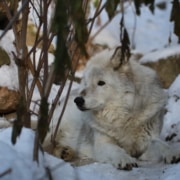This week’s Explore.org Gallery image is a photo of Axel and Grayson in a duel scent roll. Apparently, they killed a small mammal in the enclosure and spent a significant amount of time tossing it and scent rolling. We recently reviewed a publication entitled: Grey wolf may show signs of self-awareness with the sniff
test of self-recognition co-authored by Karen Davis from Wolf Park (originator of the Wolf Ethogram that we frequently use). We are definitely interested in learning the motivations of wolf behaviors.
In this preliminary study, wolves showed some signs of the ability to recognize themselves
through the “olfactory mirror” and exhibited some clues of mark-directed responses,
particularly scent-rolling, which may shed more light on this still unclear behavior
and represent a sort of olfactory equivalent to passing the original mirror test.

